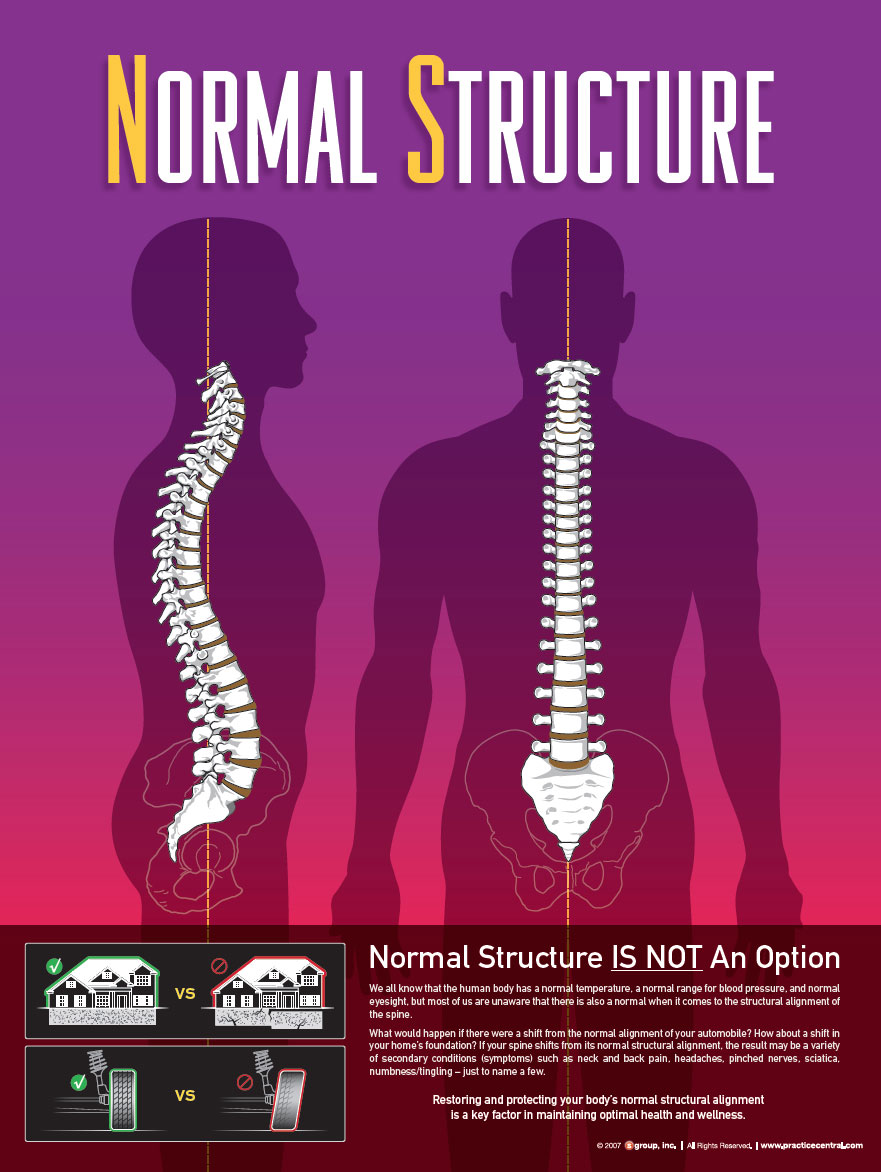POSTURE
Before we explain 4 simple changes you can make to improve your posture and your spine, let us first tell you why it's so important to do so.
Normal spinal structure is critical. When we have normal structure, we keep pressure off our spinal bones, discs and joints.
However, if we have bad posture or structural shifts outside of what is considered normal, then we begin to have problems. Abnormal structure places excessive pressure and tension on our spines and puts our body into a state of stress - leading to pain, wear & tear, and early degeneration in the body.
So rather than being reactive with our health, let's go through 4 simple life hacks that can help promote normal posture & structure so that we can actually PREVENT issues from getting worse or even arising in the first place.
1. Morning Movement Reminders
The thinking behind this is simple: if you don't use it, you lose it! We encourage everyone to adopt some sort of morning stretching routine with the goal of taking all your body's joints through their full range of motion. Doing this will stimulate all your muscle groups, lubricate the joints, help prevent early joint degeneration, and reduce pain caused by tightness or muscle imbalance. If you have trouble sticking to your routine then try placing a sticky note on your bathroom mirror as a friendly reminder :)
If you're a yogi then you'll be happy to hear that yoga poses are great for full body range of motion. For some ideas you can check out this article. https://www.mindbodygreen.com/0-13881/5-yoga-poses-to-practice-first-thing-in-the-morning.html
2. Mirrors and Water Bottles
Car seats are designed to keep us safe in the event of a collision, not to promote healthy posture. So next time you're in your car try this: first, sit up nice and tall... and then set your rear view mirror. Doing this will force you to straighten up every time you want to use your mirror to see what's behind you. Secondly, you can place a water bottle in the swell of your low back or simply imagine that one is there. Doing this will also force you to straighten up which normalizes the compressive forces through your spine to help alleviate the lower to mid-back tension that is commonly felt on long drives.
3. Chairs and Monitors
Many of us sit down and work at a desk all day long (something our bodies were not designed to do - we are meant to be moving). On top of that, many of us have terrible posture while we sit like the head and shoulders rolled forward with the back caved in. First off, we want to have all joints in our body at roughly 90 degrees when seated, with feet flat on the floor. We also want our screens and monitors to be high enough so that our eyes are level with the bottom 1/3 of the screen. For those worried about carpal tunnel the best preventative measure you can take is monitoring the position of your wrists. By placing the keyboard in a position where the wrists are neutral (not bent upward or downward) you can keep tension off the muscles and tendons surrounding the wrist and keep pressure off the actual carpal tunnel itself thereby preventing pain numbness and tingling in the hands.
4. Pillows and Positions
Your sleeping posture is absolutely critical seeing as you're in that position for 6-8 hours every single day. NEVER sleep on your stomach - it forces you to hold your neck in a maximally rotated position. Instead we recommend sleeping on your back or sides. When on your back, use a pillow the provides nice cervical support but not something that is too thick and pushes your head forward. When side sleeping try your best to rotate sides and also utilize a pillow that is equal thickness of your shoulders. That way you'll be keeping your head parallel with the rest of your spine.
PS - we recommend using the Therapeutica brand pillows. They are custom sized - if you're interested let us know and we'd gladly fit you for the right size in our office. You can also purchase them from us for a very reasonable price or find them on sites like Amazon.
https://www.therapeuticainc.com/sleeping_pillow.html
The guidelines above were designed for the most common postural and structural deficiencies we see in the general population. If you have questions about a specific movement or position based on your unique lifestyle please contact us and we'll be happy to help in any way we can!


